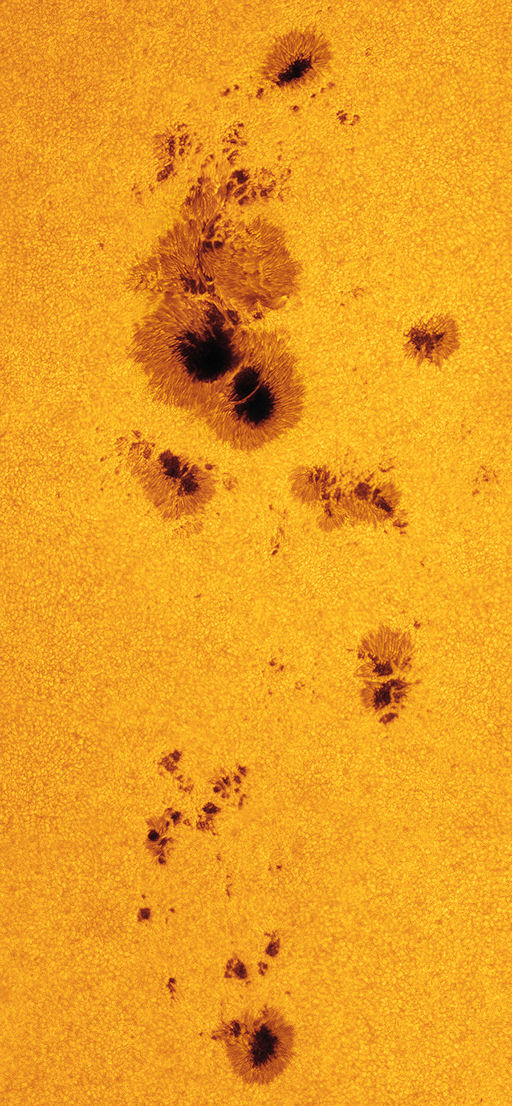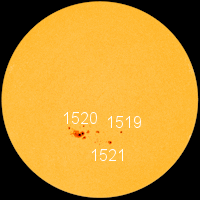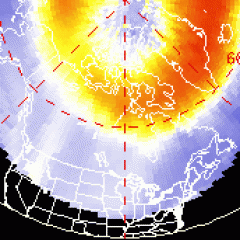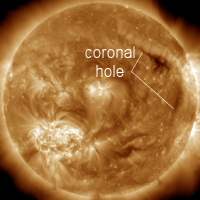~Space Weather Update~ WOW~ The Calm Before The Storm? [1]
POISED TO EXPLODE? Big sunspot AR1520 [2] has been relatively quiet for the past 24 hours, but this could be the calm before the storm. The sunspot has a delta-class magnetic field that harbors energy for X-class [3] solar flares. Solar flare alerts: text [4], voice [5].
MORNING PLANETS: Set your alarm for dawn. Jupiter and Venus have lined up in the eastern sky for a beautiful pre-dawn conjunction. Paul Martini photographed the gathering on July 10th from California's Joshua Tree National Park:
"I caught Jupiter, Venus, and the Pleiades rising above the adobe ruins of the Ryan Ranch [7], which was built in the 19th century," says Martini.
As beautiful as it is now, the show is about to get even better. On July 15th a slender crescent Moon, alight with the Da Vinci glow, will join Jupiter and Venus to form a bright celestial triangle in the morning sky. Don't miss it!
Realtime Planets Photo Gallery [8]
[NASA video: A Good Reason to Wake Up at Dawn [9]]
SOLAR ARCHIPELAGO: Sunspots are magnetic islands on the sun. Sunspot AR1520 is a complete archipelago. Scroll down to scan more than 200,000 miles of island chain:
Amateur astronomer Alan Friedman [11] took the picture on July 10th from his backyard observatory in Buffalo, New York. "AR1520 is a tremendous archipelago and a wonderful target for backyard solar telescopes [12]," he says.
The tangled magnetic canopy of the sunspot group, shown here [13] in an extreme UV images from NASA's Solar Dynamics Observatory, harbors energy for strong solar flares. NOAA forecasters estimate an 80% chance of M-class flares and a 15% chance of X-class flares during the next 24 hours. Solar flare alerts: text [4], voice [5].

![]()
Solar wind
speed: 477.2 km/sec
density: 0.0 protons/cm3
explanation [14] | more data [15]
Updated: Today at 1551 UT
![]()
X-ray Solar Flares
6-hr max: C1 1442 UT Jul11
24-hr: C9 0831 UT Jul11
explanation [3] | more data [16]
Updated: Today at: 1600 UT
![]()
![]()
![]()
Daily Sun: 11 Jul 12
![]()
![]()
Sunspot 1520 has a delta-class magnetic field that harbors energy for X-class [3] solar flares. Credit: SDO/HMI
![]()
![]()
![]()
Sunspot number: 122
What is the sunspot number? [18]
Updated 11 Jul 2012
Spotless Days
Current Stretch: 0 days
2012 total: 0 days (0%)
2011 total: 2 days (<1%)
2010 total: 51 days (14%)
2009 total: 260 days (71%)
Since 2004: 821 days
Typical Solar Min: 486 days
Updated 11 Jul 2012
The Radio Sun
10.7 cm flux: 173 sfu
explanation [19] | more data [20]
Updated 11 Jul 2012
![]()
![]()
![]()
Current Auroral Oval:
![]()
Switch to: Europe, USA, New Zealand, Antarctica
Credit: NOAA/POES
![]()
![]()
![]()
Planetary K-index
Now: Kp= 1 quiet
24-hr max: Kp= 3 quiet
explanation [22] | more data [23]
![]()
Interplanetary Mag. Field
Btotal: 5.2 nT
Bz: 1.8 nT south
explanation [24] | more data [25]
Updated: Today at 1556 UT
![]()
![]()
![]()
Coronal Holes: 09 Jul 12
![]()
![]()
A solar wind stream flowing from the indicated coronal hole cold reach Earth on July 10-11. Credit: SDO/AIA.




